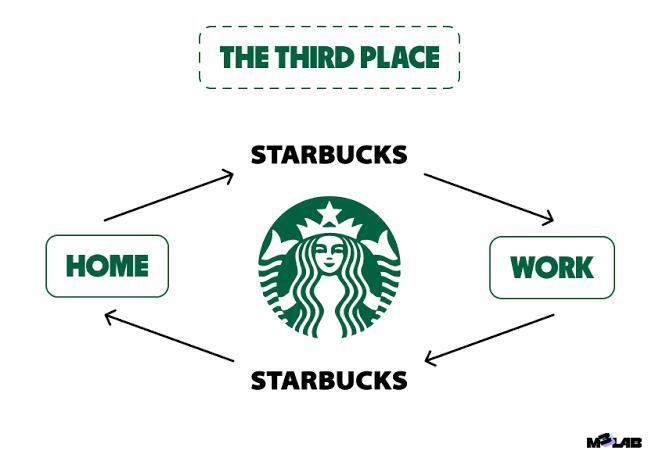Starbucks’ Revival: Why Experience, Not Just Coffee, Is Its New Growth Engine

Starbucks’ “Back to Starbucks” strategy revives its Third Place roots, focusing on café experience, barista connection, and authentic community.
For years, Starbucks has been more than a coffee chain. It has been a cultural touchpoint, a lifestyle symbol, and—most importantly—a “Third Place” between home and work where people gather, connect, and belong. Yet, in recent times, Starbucks seemed to lose its way. The relentless pursuit of efficiency, the overreliance on technology, and the lure of speed turned many of its stores into transactional hubs rather than experiential destinations.
Now, with its new “Back to Starbucks” strategy for 2025, the brand is staging a revival. The vision is clear: Starbucks wants to return to its roots—not just as a purveyor of premium coffee, but as a place where the experience is as necessary as the product itself. Under CEO Brian Niccol, the company is re-centring its focus on people, place, and genuine human connection.

This revival reflects a broader truth about modern retail: while online convenience is unmatched, physical experiences still matter deeply. Consumers crave sensory, emotional, and social interactions that cannot be replicated on a screen. Starbucks’ future, therefore, hinges on making its stores not just coffee counters but stages for human experience.
The Problem Starbucks Faced
By 2024, Starbucks was grappling with troubling signs:
- A 6–7% decline in U.S. and global sales.
- Falling foot traffic as customers flocked to faster, cheaper rivals.
- There is a growing perception of Starbucks as impersonal, overly automated, and transactional.
The company’s “grab-and-go” model and emphasis on speed had unintended consequences. Stores felt like transit stations, where people rushed in and out without lingering. The famed Starbucks “Third Place”—once celebrated as a sanctuary of warmth, comfort, and community—had been reduced to a buzzword. Even long-time loyalists complained that the “soul” of Starbucks was missing.
This is where Brian Niccol stepped in with his Back to Starbucks plan: a comprehensive revival anchored not in discounts, not in aggressive promotions, but in experience.
Reimagining the Starbucks Experience
1. Making the Café the Star Again
Starbucks is redesigning its stores to bring back the cosy, lingering atmosphere that once made them magnetic. New layouts are being piloted with:
- Comfortable seating zones that invite people to stay, not just sip and leave.
- Ceramic mugs and condiment bars, reinstating small rituals that made visits feel personal.
- Self-service options for convenience without compromising warmth.
This shift signals that Starbucks does not want its cafés to be mistaken for fast-food outlets or automated kiosks. It wants them to feel like “living rooms,” alive with energy, aroma, and human connection.
2. The Green Apron Service Model
A significant part of the revival lies in retraining baristas. Known internally as the “Green Apron Service Model,” Starbucks is equipping its employees to prioritise hospitality over mere efficiency. The goal is simple: every customer should feel recognised, valued, and welcomed.
In an age where self-checkouts and AI-driven ordering dominate retail, Starbucks is doubling down on the human touch. The barista-customer relationship is once again positioned as the beating heart of the brand.
3. Balancing Technology and Touch
Starbucks has not abandoned digital convenience—it remains a critical part of its operations. Mobile ordering, sequencing, and queue systems are being enhanced. But the difference is that these improvements are now designed to support, not replace, the in-store experience.
Starbucks is sunsetting many of its “pickup-only” stores, acknowledging that convenience alone cannot sustain loyalty. Instead, the company is betting on full-service cafés where both digital and physical experiences coexist harmoniously.
4. Simplifying the Menu, Elevating the Coffee
Another pillar of the turnaround is a streamlined menu. Over the years, Starbucks had become bloated with endless customisation and seasonal fads. Now, the focus is returning to speciality coffee, seasonal brews, and the most-loved core items.
Even pricing is being reimagined—moving away from aggressive discounting toward consistent, transparent pricing (for example, eliminating upcharges for non-dairy alternatives). The intent is to reinforce Starbucks as a premium yet accessible brand where quality, not gimmicks, does the talking.
Why Experience Matters More Than Ever
The decision to focus on experience is not nostalgia—it’s survival. With online shopping and quick-service competitors thriving, physical retail can only win by offering something digital platforms cannot: immersion of the five senses, authentic social connection, and emotional resonance.
This idea is not new. Starbucks founder Howard Schultz had long championed the concept of the “Third Place,” recognising that people didn’t just come for coffee—they came for community. In his 2022 remarks during his third stint as CEO, Schultz said:
“The Third Place has never been defined solely by a physical space; it’s also the feeling of warmth, connection, and a sense of belonging.”
Brian Niccol is now extending this philosophy into the present day. He recognises that technology has changed how we live, but not what we need. Humans still crave spaces where they can feel part of something larger, even while enjoying individual moments. Starbucks’ revival, therefore, is not just about saving sales—it’s about rekindling cultural relevance.
The Broader “Plan to Win” Framework
Brand experts often describe revitalisation in terms of the 8 P’s: Purpose, Promise, People, Product, Place, Price, Promotion, and Performance. Starbucks’ new direction reflects a thoughtful application of this framework:
- Purpose & Promise: To remain the world’s most beloved coffeehouse that delivers premium quality and authentic connection.
- People: Baristas retrained to be brand ambassadors of warmth.
- Product: Focused coffee menu, continuous innovation, premium seasonal offerings.
- Place: Stores redesigned as inviting, lingering-friendly spaces.
- Price: Transparent, consistent, and value-driven.
- Promotion: Experiences, events, and storytelling rather than discounting.
- Performance: Measured not just by sales but by customer loyalty, repeat visits, and employee satisfaction.
Of all these levers, the most critical right now is Place. Place is the face of the brand, the stage for its story. Without reimagining the café as an experiential hub, Starbucks risks becoming just another beverage retailer.
Outcomes Starbucks Hopes to Achieve
If executed well, Starbucks expects to see:
- Revived loyalty from core customers who had drifted away.
- Improved profitability, driven by experience-led differentiation rather than discounts.
- A renewed store culture, where employees feel empowered to create moments of connection.
- Cultural leadership, re-establishing Starbucks as not just a coffee brand but a social institution.
In short, Starbucks wants to be remembered not for how fast it serves a latte, but for how warmly it makes people feel.
Conclusion: Experience Is the New Strategy
Starbucks’ “Back to Starbucks” strategy is not about chasing fads or gimmicks. It is about returning to the timeless truth that people don’t just buy products—they buy experiences. Coffee is the medium, but connection is the message.
By investing in baristas, redesigning stores, simplifying offerings, and restoring its Third Place ethos, Starbucks is reminding the world why it mattered in the first place. In doing so, it offers a lesson for all of retail: in an age of algorithms and automation, the brands that win will be the ones that make us feel.
For Starbucks, that means making every cup of coffee not just a beverage, but a moment of belonging.
Reference
https://brandingstrategyinsider.com/the-return-of-starbucks-place-strategy



